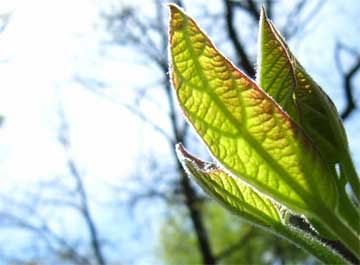The sun, beaming down on green leaves, starts plant manufacturing systems into action, providing them with the power to derive carbon dioxide from air, and water from soil, and to turn these substances into sugar and starch, which is their food. This manufacturing process is called photosynthesis. Photosynthesis is carried on only when plant tissues containing chlorophyll (green pigment) are exposed to light. Without light, plants turn yellow or become “chlorotic.”
If you place a piece of tape across a section of an ivy leaf, and leave it there for 24 to 48 hours, you will find upon removing it that the section which did not receive sun or artificial light will be much lighter in color than the rest of the leaf. Gardeners apply this principle in bleaching celery from green to near-white. In a way, sun tans leaves, giving them deeper pigmentation, just as it does our skin.

Photosynthesis normally takes place only in green plants, but just a few decades ago it had been demonstrated that sunlight could be harnessed to create sugar and starch from carbon dioxide and water outside the living cells of green plants. This discovery may some day cut down our dependence upon green plants for food.


Comments on this entry are closed.